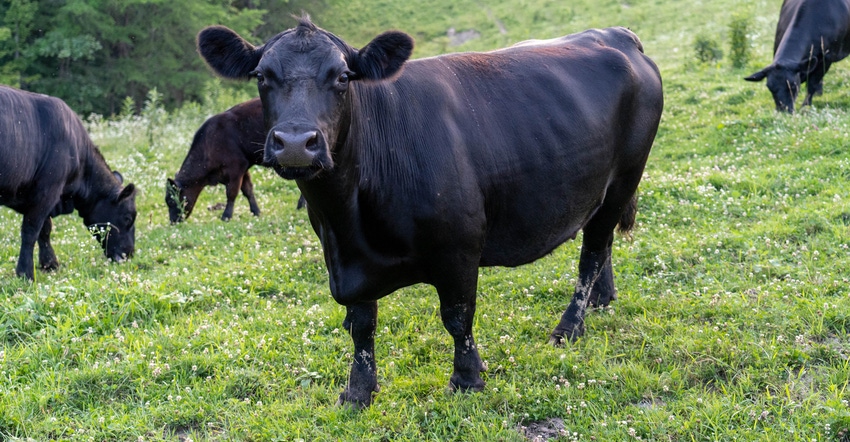December 21, 2021

What is driving recent cash fed-cattle prices higher at auction? What is the cattle market going to look like in 2022? Those have been common questions as of late, especially after record-setting, fed-cattle auction prices during the first week of December at several auction markets.
Auction price dynamics
As we know in agriculture, the law of supply and demand still has a great effect on commodity prices. Let’s talk about demand first.
Often what we do not know, especially with regards to fed cattle, is the balance between supply and demand of a given packer on a given harvest day. For a plant to operate efficiently, it needs to operate at capacity to cover fixed costs associated with daily operations.
From the supply side of things, most packers fill a day’s harvest with a combination of cattle that are forward-contracted, negotiated or formula-priced, and cattle purchased on the cash market. Depending on where and who the packer is, the ratios between the three purchasing avenues will vary greatly.
Without getting too into the weeds on how cattle are scheduled for harvest, one can deduce if the supply of contracted or negotiated price cattle is limited, there is a need to buy fed cattle on the cash or spot market.
When more than one packer at an auction is caught shorthanded on supply, the need to fill shackle spaces increases demand for cash cattle and thus creates higher prices at the sale barn. This is what happened the first week of December when several cattle sold at Ohio auctions brought $150-160 cwt, with market report highs topping out at $169 cwt.
As packers got caught back up with committed cattle, we followed that one week with steady, yet softer prices in mid-December.
Inventory
On the national level, cow inventory was down 1% in July compared to last year. Cattle on feed in feedlots with at least 1,000 head were reported to be also down 1% in October compared to 2020. Historically, cattle inventory is still rather large, with various plants running at reduced capacity because of the health and labor implications of the COVID-19 pandemic.
On a state level, according to the January 2021 National Agricultural Statistics Service report “Agriculture Across Ohio,” cow numbers are slightly up from 2020 at 302,000 head, up 4,000 cows from a year ago.
However, Ohio cattle-on-feed numbers are quite a bit lower, down 20,000 head from one year ago. In 2020, Ohio had 170,000 head on feed, compared to 150,000 in 2021. A similar story can be said with calf inventory down 35,000 head from one year ago. Keep in mind these are Jan. 1 inventory numbers.
As I visit with some of our colleagues in neighboring states, similar trends can be found with reduced brood cow numbers this year in Kentucky, as one example.
High demand for beef, both domestic and for exports during the pandemic, led to higher-than-average cull prices throughout 2021. It is likely that cow numbers will be lower this coming Jan. 1, and thus the coming 2022 calf crop will be smaller yet. Year-to-date (December 2021), beef cow slaughter nationwide has been up 10%, according to Rabobank.
Into 2022
This increased cow slaughter total will lead U.S. beef production to be down an estimated 2.5% in 2022, according to Rabobank.
So, what will 2022 look like with regards to cattle prices? Barring any setbacks or the unknown, many industry experts have projected cattle prices to be higher across the board in 2022.
Regionally, the demand for high-quality fed cattle from major packing plants closest to us (the two JBS beef plants in Pennsylvania and Michigan, Cargill in Pennsylvania, and the Tyson plant in Joslin, Ill.) looks to remain strong, as does the demand for locally produced beef as the overall regional supply of cattle decreases.
Agriculture is always a numbers game, and given the numbers we have available, there is cause for optimism in the beef cattle business for 2022.
Ruff is the OSU Extension beef field specialist. He is also a member of the OSU Extension Beef Team that publishes the weekly Ohio Beef Cattle letter, which can be found at beef.osu.edu.
You May Also Like




